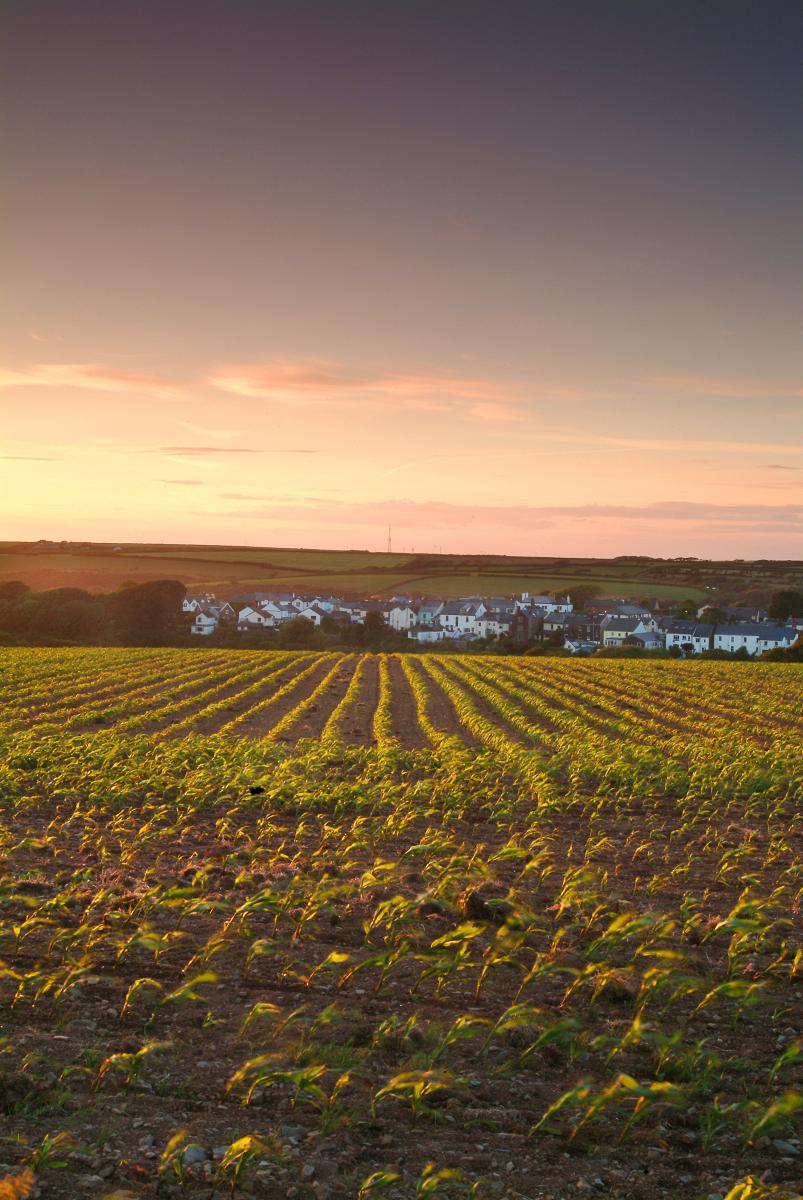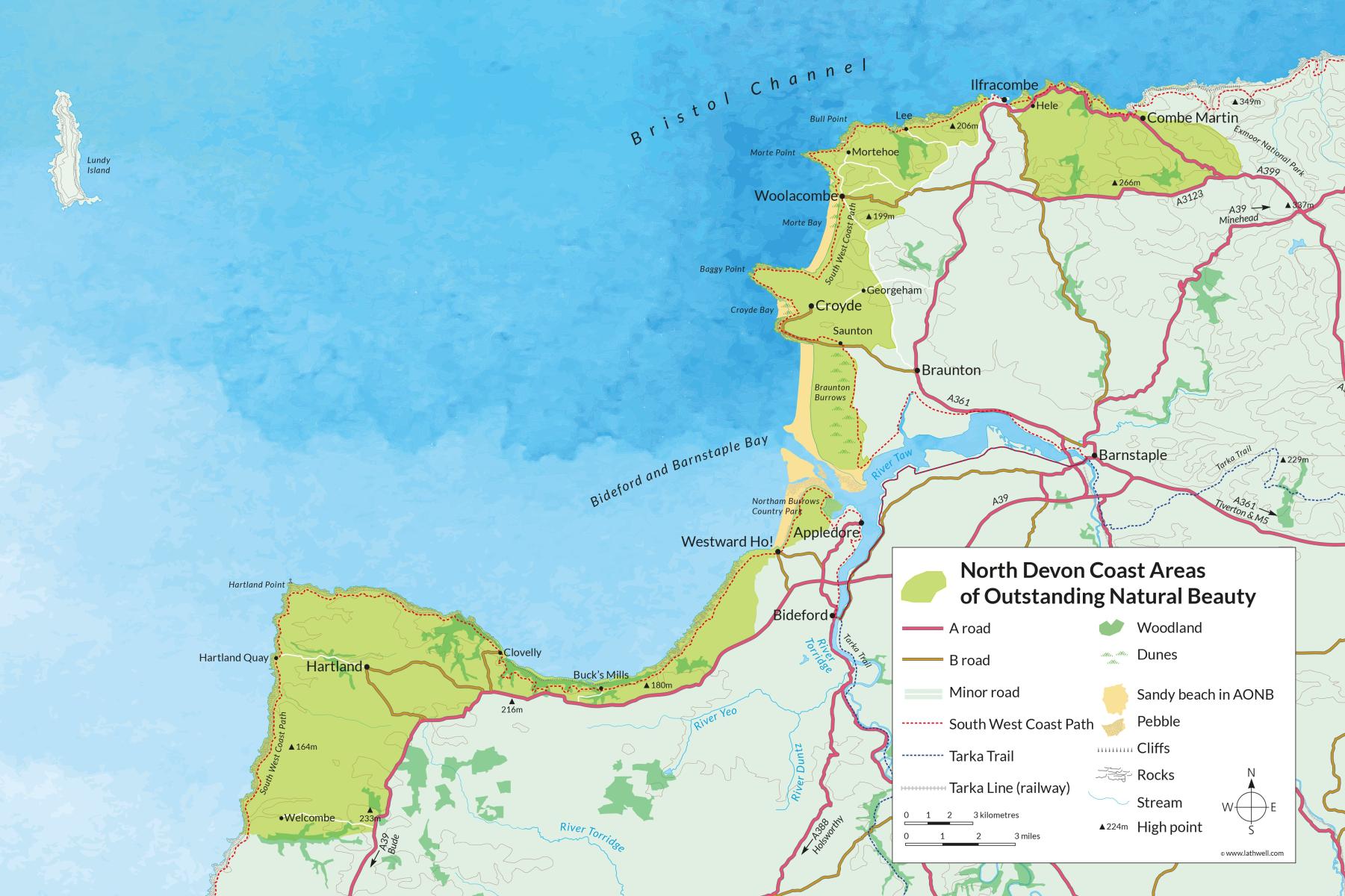
Projects supported by the Programme will be expected to deliver against the following aspects of the North Devon Coast AONB Management Plan 2019-2024 and where relevant to the Actions in the North Devon Biosphere’s Nature Recovery Plan. These are summarised below with a list of Indicative Projects. A PDF version of our local priorities can be downloaded here:
North Devon Coast AONB Management Plan Policies
Projects should contribute to at least one, preferably more, of the ‘summarised policies’ from the AONB Management Plan:
AONB Management Plan Policies for Place – Looking after our landscape, natural and cultural heritage, and addressing climate change
1. conserve and enhance landscape character and the special qualities of the AONB
2. conserve and enhance habitats and species, increase wildlife richness and ensure the resilience of the landscape
3. reduce impacts on biodiversity from invasive species, disease and climate change
4. enhance, maintain and promote the geodiversity of the AONB through appropriate site management and public awareness
5. conserve and enhance the historic and cultural features of the AONB, and their setting
6. deliver sustainable and exemplar land management, forestry and farming practices in keeping with the AONB designation
7. maintain landscape features such as hedge-banks and traditional broadleaved woodlands
8. enhance the Natural Capital within the AONB including carbon storage, clean water, clean air, timber, renewable energy and food, consistent with the designation
9. improve inland, coastal and bathing water quality through catchment management, local flood management and litter management
10. support community and business to reduce carbon emissions from the designated AONB so long as they are complimentary to the special qualities of the AONB

AONB Management Plan Policies for People and Prosperity – Action, Learning and Understanding
11. increase understanding of local heritage and culture
12. increase understanding, adaptation and mitigation of climate change impacts on coastal landscapes and communities
13. raise awareness and understanding of the AONB, its special qualities, natural and cultural heritage
AONB Management Plan Policies – Improving Access, Health and Wellbeing
14. develop improved access to and interpretation of the natural environment
15. reduce barriers to improve the health and wellbeing of local people and visitors
Full details of the AONB Management Plan: North Devon Coast AONB Management Plan 2019 – 2024 | North Devon Coast (northdevon-aonb.org.uk)
North Devon Biosphere Nature Recovery Plan – Priority Actions
1. create new species-rich wet grassland as well as protect and restore existing areas
2. create or restore ponds, scrapes, reed/sedge beds to create wildlife habitat as well manage run-off
3. re-naturalising/wilding species poor habitat in the AONB, to restore a mosaic of culm grassland, wet woodland and other wetland habitats through natural processes
4. ensure all existing high quality semi-natural grassland, heathland and bracken habitat is under favourable long-term management
5. bring intensive grassland or arable land into the process of conversion to high value semi-natural grassland and heathland
6. bring intensive grassland fields into conversion to semi-improved grasslandthat have a range of herbs and native grasses present within them, for example through the introduction of herbal leys and changing grazing and nutrient management regimes.
7. manage/establish wood pasture, silvo-pasture or silvo-arable, with in-field trees
8. deliver projects that re-wild and create new habitat giving space for natural processes, including dynamic edge habitats and scrub
9. improve soil health across arable and pastural land
10. implement insect-friendly measures (flowers for pollinators, beetle banks and in-field strips) and other measures to benefit farmland birds (later sileage cut, seed mixes, skylark plots)
11. create coastal fringing woodlands landwards to compensate loss due to coastal change
12. manage existing park and wood pasture favourably, including planting successor generation of trees
13. undertake traditional hedgerow restoration (bank and vegetation) or creation that supports landscape and wildlife
14. create or restore traditional standard orchards which are managed for nature/fruit production
15. eradicate priority non-native invasive plants, particularly of laurel and rhododendron
16. creation of standing dead and decaying wood to support cavity-dwelling wildlife in woodlands
Link to full Biosphere Plan – Nature Recovery Plan – North Devon UNESCO Biosphere Reserve UK (northdevonbiosphere.org.uk)
Indicative Projects
The kinds of indicative projects which might support delivery of the Management Plan poicies include:
Plan Policies and Actions
Indicative projects
Recreation, re-establishment of traditional stone-faced hedge-banks; restoration of traditional orchards;
management and recreation of coastal heathlands; conservation of traditional farm buildings, introduce schemes that reduce the level of light emission to conserve the dark skies of the AONB
Undertake habitat management work to support key species such as Greater Horseshoe Bats; link areas of high biodiversity together by forming landscape links, managing/restoring hedgerows, native woodland, or low introduce low management/ wild areas of land; undertake scrub clearance on valuable coastal grassland or heathland sites; create new habitats such as wildflower grasslands, ponds; introduce low intensity grazing on unmanaged land
Look at innovative ways of managing/eradicating invasive species such as Himalayan balsam, Japanese Knotweed and Giants Hog Weed from natural habitats. Clearance/eradication of rhododendron and laural from native broadleaved woodlands; replant areas of woodland affected by ash die-back with other native broadleaves. Note large scale projects may be best supported through the Woodland Grant Scheme.
Develop leaflets and information boards that explain the significant geological and geomorphological features that are characteristic of the AONB; develop projects that conserve and enhance historic structures that developed due to local geology, for example lime kilns around the North Devon High Coast or the silver mining industry in Combe Martin.
Undertake scrub clearance or woodland management on scheduled monuments and other important heritage sites, undertake small scale works on buildings of historic and cultural significance within the AONB, including those linked to 2nd World War D Day training. Undertake geophysical surveys on important heritage sites
Look at new innovative ways of grazing areas that are traditionally difficult to manage; look to develop projects that enable conservation grazing by sheep and cattle, that also promote locally sourced meat. For example use of Red Devon Cattle as conservation grazers.
Re-introduction of local apple varieties to orchards and facilitate the production and consumption of local fruit and cider
Management/restoration of traditional hedge-banks, small scale planting of woodlands using native broadleaved trees. (Note large scale projects should be supported by either Forestry Commission Woodland Grants Scheme or the larger Higher Tier and Mid Tier Countryside Stewardship Schemes through Defra)
Introduction of small solar panel schemes on the rooves of modern farm buildings, or the introduction of small-scale renewable wind projects on farms. Schemes that encourage and support the consumption of locally produced food. Projects that encourage the management of native woodland by utilising the woodland products locally, for example small charcoal burning enterprises, or other products made from wood.
Schemes that improve water quality, reduce run off and reduce flooding. This could involve stream attenuation projects to assist with flooding, creation of new habitat adjacent to water courses. fencing of streamside farmland to prevent stock entering the water, reducing high volumes of water from farmyards
Small scale renewable energy projects would be considered provided they did not conflict with the main purpose of conserving the natural beauty of the AONB.
Develop walking trails, leaflets and information boards that highlight the significance of the heritage and culture of the AONB
Projects that raise public awareness of the potential impact of climate change, particularly with regard to coastal erosion and flooding and what we might do to slow this down. This could include projects that manage the coastal land using natural solutions, to reduce the impact of sea level rise. Projects that try to reduce the effect of coastal squeeze on habitats by the creation of new ones that allow these habitats to roll back. (For example woodland edge planting on farmland behind our valuable coastal woodlands.
All forms of information and interpretation that raises awareness of the AONB and its special qualities and how these need to be conserved and managed for future generations.
Increase opportunities for access to the countryside by providing new permissive footpaths and access areas. Improve the infrastructure on all access areas, to ensure more people can enjoy the AONB. Provide opportunity for schools to visit working farms and learn about the importance of farming in managing the countryside.
Projects that encourage all sectors of the community to enjoy and receive the health benefits of the countryside to both visitors and those that live in or on the edge of the AONB.

